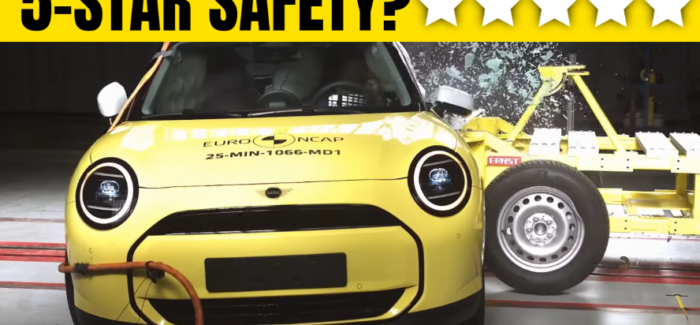Mini Gets 5-Star Rating – But There’s a Catch
The latest safety results are in, and both the Mini Cooper E and the new Mini Countryman have earned the highest safety rating available from the Australasian New Car Assessment Program. For families, everyday drivers, or those looking to transition to electric vehicles, that is very reassuring news. While both vehicles boast strong safety credentials, there are key differences that might sway buyers one way or the other.
Let us begin with the Mini Cooper E. This small electric car performed strongly across all crash test categories, earning solid scores that led to its five-star safety rating in Australia and New Zealand. During the frontal offset crash test, the structure held up well. There was adequate protection for the driver’s chest and legs and a similar outcome for the front passenger. In the full-width frontal impact test, results ranged from adequate to good, and side-impact testing showed strong protection in all vital areas.
The Mini Cooper E is also equipped with advanced driver assistance features. Lane support and autonomous emergency braking helped it avoid or reduce serious collisions with cars, cyclists, pedestrians, and motorcycles. However, it is worth noting that the reverse emergency braking system was not tested because it was not installed on the test vehicle.
When it comes to child safety, there was good and adequate protection for younger passengers in the second row. But installing some ISOFIX child seats was not easy. The visual indicators for proper installation were difficult to see due to limited access, and as a result, certain seats could not be fully evaluated. This may be a concern for parents planning to use this model for transporting young children.
Now let us talk about the Mini Countryman, which makes up the majority of this story. As a small sport utility vehicle available in both petrol and electric versions, the new Countryman is larger and better suited for family use. It also achieved a five-star rating with strong marks for overall safety.
In the offset crash test, there was good protection for most body parts, though a slight risk of chest injury was noted for the driver. Some marginal results were also recorded for the legs of the front passenger, where dashboard structures posed a small risk.
The full-width frontal test showed marginal chest protection for the driver and the rear female passenger. Still, other vital areas were well protected. For children seated in the rear, both six-year-old and ten-year-old crash test dummies were well protected in side and frontal impacts.
The Countryman does not have the same installation visibility issues for child seats that were seen in the Cooper E. It includes ISOFIX anchor points and top tethers in all the right places and offers better access.
Another standout feature on the Countryman is its active hood system. When sensors detect a pedestrian impact, the hood raises slightly to reduce injury risk by creating more clearance from hard engine parts. In pedestrian impact testing, this helped the Countryman score good and adequate results across most of the hood and windshield area.
If you found this information helpful and want to stay up to date on the latest safety news and vehicle tech, do not forget to like, subscribe, and hit the notification bell.


Submit a Comment